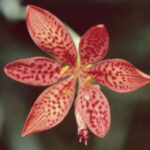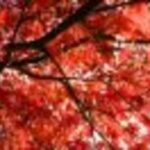The blue Atlas cedar tree, Cedrus atlantica f. glauca, is a native tree in the Atlas Mountains of Algeria and Morocco. This pyramidal shaped tree can grow to heights of 40 to 100 feet, with a spread of 25 feet or more. The needles look blue to a blue-green.
This tree is hardy in U.S. Department of Agriculture zones 6 through 8. If you happen to live in a zone that is lower than 6, like I do, you can grow the Atlas cedar tree as a houseplant. It also makes a wonderful bonsai plant. If you want this tree to grow in the landscape or in the house, you don’t have to buy one already growing. You can save some money and grow your own tree from seed.
The blue Atlas cedar tree bears male and female cones. Pollination begins in the late summer or fall, but the female cones will not grow until the following spring. It can take two years for the female seeds to ripen. To tell when the seeds are ready for harvesting, you need to look at the color, because it changes as the cone matures. When the cones are first pollinated, they start out purple green. As they mature, the color changes to mauve and then finally, in the fall, they will turn light brown.
Gather the Seed Cones
Pick the cones that are light brown, or tan. Don’t wait too long because in nature, the cones will open, spilling their seed over the ground.
When you get home, fill a bucket with warm water. Dump the newly picked cones inside. Soak the cones for 24 hours so you can remove the seeds more easily. Remove the cones from the water and set them on a tray to dry. Hold the cone over a tray or tarp covered table and shake out the winged seeds. Do not allow the seeds to dry out, or your success for propagation will be reduced.
Stratify the Seeds
Fill a sealable baggie halfway with dampened, milled, sphagnum moss. Place the seeds inside and then cover the seeds with more damp sphagnum moss. Close the bag and store it in your refrigerator or in some other area that remains between 32° and 34° Fahrenheit. Leave them there for at least three weeks. You’ll want to check the sphagnum moss to make sure it remains moist, but not soggy or the seeds will rot. Spray the moss with water if it starts to dry out.
Prepare the Pots and Plant the Seeds
Mix equal amounts of peatmoss and perlite together. Moisten the mixture with water and then fill a flat with this planting medium. Sometimes, I like to plant my seeds in 4-inch pots instead of the flat. Fill one pot for each seed you want to plant. You can plant two seeds per pot, but if they both grow, you will need to remove one tree seedling. I hate doing that so I only plant one seed in each pot. When planting the seed in a flat, lay the seeds on the top of the soil, allowing 3-inches of space between each seed. If planting in a pot, place the seed in the center of the pot. Place the pots in a tray with sides for easier carrying. An old cake pan, bread pan or other pan will keep the pots standing upright.
Lightly cover the seeds with the planting medium. They should be 1/4 to ½ inch below the soil’s surface. They need light to germinate. Mist the top until it is thoroughly moistened but not soggy. Cover the planting tray with a sheet of clear plastic, or you can place all the pots inside a big plastic bag. Position the flat or tray in a bright window that receives indirect sunlight. The plastic acts like a hothouse, so you don’t want it in direct sunlight or it will be too hot for the seeds to germinate.
Mist the Soil
Check the soil daily to make sure it is moist. Mist the soil if it becomes dry to the touch. It will take three to four weeks for the seeds to germinate. Remove the plastic when the seeds have germinated. Continue to grow the young seedlings in the same location, keeping the soil moist, but not soggy.
Transplanting
If you sowed the seeds in a tray or flat, you will need to transplant them when they are 2-inches tall. Be very careful when transplanting them, because these trees stress easily during this process. Seedlings grown in 4-inch pots can continue to grow in the same pot until you notice roots coming out of the bottom.
Sources:
Fine Gardening: Cedrus atlantica f. glauca Blue Atlas Cedar
“American Horticultural Society A to Z Encyclopedia of Garden Plants”; Christopher Brickell; 2004






